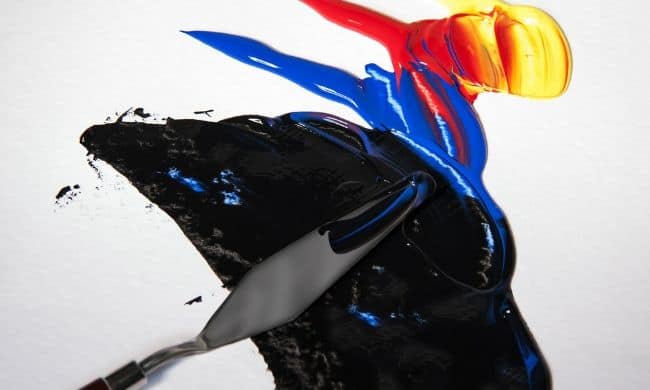As a painter, it is useful to know the drying times of acrylic paint. If you know if acrylic paint dries faster in the heat or the cold it can help you to judge your painting and drying times. It also helps to know how the paint will react to your location and conditions.
Acrylic paint dries out much faster if it is hot. It also stays wet longer if it is cold. Although there is a lower temperature at which it is even less tolerant. I found this a huge problem when working with acrylics with some techniques. Below I have looked into why this is.
In two supporting posts, I also show ways to either prevent the paint from drying too quickly and slow it down or control it to a degree.

Why Acrylic Paint Hot & Cold Drying Times Can Cause Artists’ Problems
One of the advantages of using acrylic paints is that they dry out quickly. It saves all that waiting around that you get with oils. The fast drying times of acrylic paint is one of the major reasons to pick them as a medium to paint with. Not having to wait forever for them to dry works well in our fast-paced modern life or smaller homes or studios. However, sometimes they just dry out all too quickly.
Unfortunately one of the disadvantages of using acrylic paint is also that they dry out too quickly sometimes. The heat increases the speed at which they dry – a lot!
I live in a cooler climate so this is not usually a problem. During those hot sunny days though you barely get the paint on the brush and you can’t use it.
The heat makes acrylic paints dry a lot faster. Which makes it unusable. I found this very annoying. There are ways around this. By understanding the drying times you can use them to your advantage.
Why Acrylic Paint Dries Faster in the Heat
Acrylic paint is a water-based medium. It is made of pigment suspended in acrylic polymer emulsion. “Acrylic polymer emulsion is a combination of small acrylic resing spheres held in water (Source).”
Also, when you use acrylic paint you often dilute it with water.
The hotter it is the faster the water evaporates and the quicker the paint dries. This assumes dry heat.
The reverse is true of the cold. In colder weather, the paint dries more slowly because the water does not evaporate as quickly.
This can be both an advantage and disadvantage to painting depending on how you use it. There are a lot of ways that you can either speed up or slow down the drying process of acrylic paint.
Why Acrylic Paint Drying Speeds Vary
Not all acrylic paints dry out at the same speed in the same hot or cold conditions though.
I have found that cheaper acrylic paint and student paints dry out faster than artists’ acrylics.
Some artists design a range of acrylic paints and additions so that they dry more slowly. This makes painting things that need softer edges like fluffy clouds much easier.
Dry Heat Vs Humid Heat Affects On Acrylic Paint Drying Times
I am not a scientist and am making an assumption based on prior experience here. That is because the evaporation of water causes the paint to dry and having water in the air will slow the drying time down even in hot temperatures.
I have done this at home when painting in the heat of summer. I sprayed the air with a spray water bottle to keep the air moist. This did help to slow the drying time. So those of you in humid warm countries may find it has similar effects. Assuming you are not using air conditioning or a fan.
Air movement also helps to speed up the drying time of acrylic paint so a fan that moves air around can also affect it.
Don’t Make Yourself Crazy Over This
Don’t make yourself crazy over this. While it’s worth knowing and while you can use it to your advantage, it will drive you crazy if you try to account for all elements while painting. Some control can help.
Trying to control everything will drive you nuts and it’s not possible nor desirable. There are far too many variables. Don’t let them get in the way of your enjoyment of painting. I just wanted to show the different issues. This way if you do have difficulty in any area you are armed with the knowledge of how to fix it if you need to.
In my next posts, I am going to explain how to slow down the drying times and how to speed up the drying times of acrylic paints. I was going to put them all in one post but decided they deserve a post in their own right.
